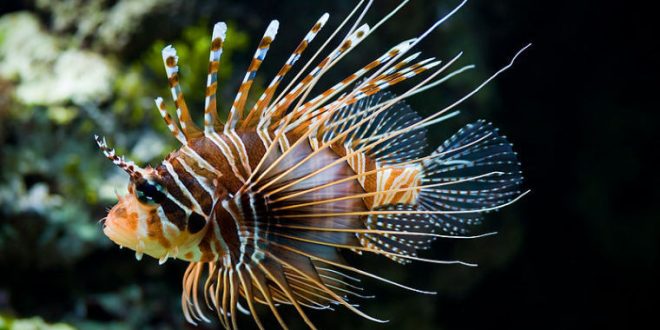Whole Foods is now selling fresh lionfish in seafood departments, hoping to take a bite out of the non-native, invasive species hurting Florida’s offshore reefs.
Whole Foods workers will remove the venomous spines before consumers purchase the fish. It will retail for $8.99 per pound through May 31, according to WWSB-TV, before moving to its regular price of $9.99 per pound.
According to a company statement, the “white, buttery meat lends itself to a number of different recipes.”
Whole Foods, which has a location in Naples, isn’t the first grocery store to carry lionfish. Publix beat Whole Foods to the punch by a full year.
Florida officials have encouraged residents to combat the species in the kitchen, hoping to keep numbers in check by catching and eating the fish.
The Whole Foods store in Naples is located inside the Mercado shops along U.S. 41, just north of Vanderbilt Beach Road. The company will be expanding into Lee County, though, by the end of 2017.
Lionfish, though still rare in restaurant kitchens, are growing more popular for home cooks and at charity events.
Lionfish have been reported along the southeastern United States coast from Florida to North Carolina. Juvenile lionfish have been collected in waters off Long Island, New York, and Bermuda.
Lionfish are a popular marine ornamental fish and were possibly intentionally released into the Atlantic. The first lionfish was reported in South Florida waters in 1985 with many additional sightings occurring until they were documented as established in the early 2000s.
The largest of lionfish can grow to about 15 inches (0.4 meters) in length, but the average is closer to 1 foot (0.3 meters).
Lionfish are popular in some parts of the world as food, but are far more prized in the aquarium trade. Their population numbers are healthy and their distribution is growing, causing some concerned in the United States, where some feel the success of this non-indigenous species presents human and environmental dangers.
Agencies/Canadajournal

 Canada Journal – News of the World Articles and videos to bring you the biggest Canadian news stories from across the country every day
Canada Journal – News of the World Articles and videos to bring you the biggest Canadian news stories from across the country every day

